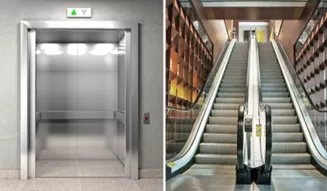Blogs
PCSBTC-0002
Ensuring Safety and Efficiency: Audits for Lifts and Escalators
Ensuring Safety and Efficiency: Audits for Lifts and Escalators
In today’s urban landscape, lifts and escalators are indispensable. These machines play a vital role in the smooth functioning of buildings, transporting people swiftly and safely between floors. However, with great utility comes great responsibility, and this is where regular audits come into play.
What Are Lift and Escalator Audits?
Lift and escalator audits are comprehensive inspections conducted to ensure these systems operate safely and efficiently. These audits assess the mechanical, electrical, and safety aspects of the equipment, ensuring compliance with local regulations and standards. They help identify potential issues before they escalate into major problems, thus preventing accidents and ensuring a seamless user experience.

What Are Lift and Escalator Audits?
Lift and escalator audits are comprehensive inspections conducted to ensure these systems operate safely and efficiently. These audits assess the mechanical, electrical, and safety aspects of the equipment, ensuring compliance with local regulations and standards. They help identify potential issues before they escalate into major problems, thus preventing accidents and ensuring a seamless user experience.
Why Are Audits Important?
The significance of audits for lifts and escalators cannot be overstated. Here’s why they are essential:
- Safety Assurance
Safety is the foremost priority in any building infrastructure. Audits ensure that lifts and escalators are safe for use by identifying wear and tear, mechanical failures, and other potential hazards. Regular checks help prevent accidents and ensure the well-being of users.
- Regulatory Compliance
Different regions have specific regulations and standards governing the operation of lifts and escalators. Audits ensure that these systems comply with all relevant laws, avoiding legal issues and ensuring that the building management meets its obligations.
- Efficiency and Performance
Regular audits help in maintaining the efficiency and performance of lifts and escalators. By identifying and rectifying issues promptly, these audits ensure that the systems operate smoothly, reducing downtime and inconvenience for users.
- Cost Savings
Preventive maintenance through regular audits can save significant costs in the long run. Identifying and fixing minor issues early prevents major breakdowns and expensive repairs, thus extending the lifespan of the equipment.
What Do Audits Involve?
- Visual Inspections
Auditors perform a thorough visual inspection of all components, including cables, pulleys, safety gears, control panels, and more. This helps in identifying any visible signs of damage or wear.
- Functional Testing
Functional tests are conducted to ensure that all parts of the lift or escalator are working as intended. This includes checking the speed, stopping accuracy, door operation, and emergency functions.
- Safety Checks
Safety checks are a critical part of the audit. Auditors assess the functionality of safety devices, emergency brakes, alarm systems, and other safety features to ensure they are in working order.
- Documentation Review
Reviewing maintenance records, past audit reports, and repair histories is crucial. This helps in understanding the equipment’s condition over time and identifying recurring issues.
- Compliance Verification
Auditors ensure that the lifts and escalators comply with local regulations and standards. This includes checking certifications, licenses, and adherence to safety codes.
Conclusion
Regular audits for lifts and escalators are essential for ensuring safety, compliance, and efficiency. By conducting comprehensive inspections and addressing potential issues early, building management can provide a safe and reliable environment for users. Investing in regular audits not only enhances the lifespan of the equipment but also fosters trust and confidence among building occupants.
